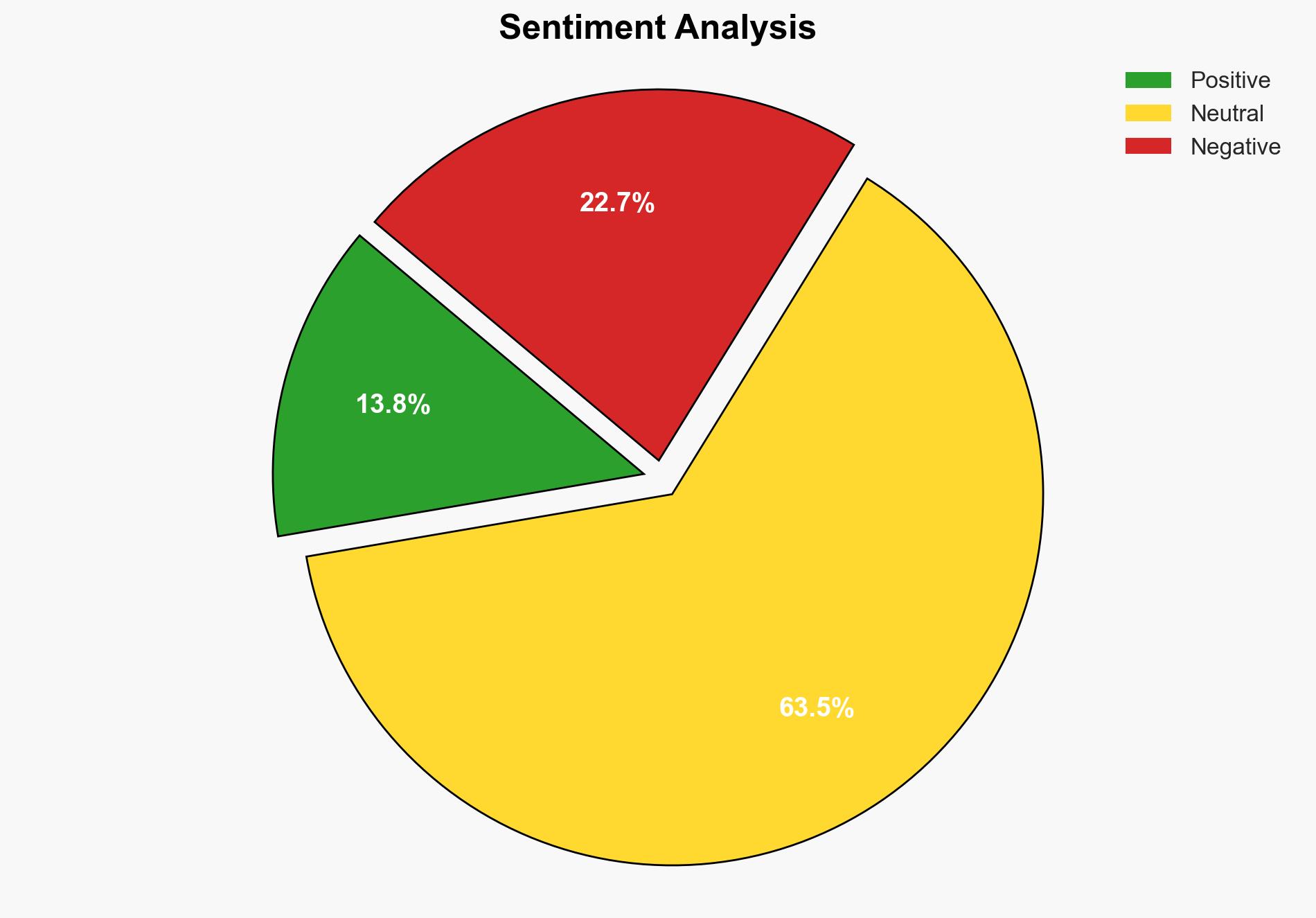Rules File Backdoor AI Code Editors exploited for silent supply chain attacks – Securityaffairs.com
Published on: 2025-03-19
Intelligence Report: Rules File Backdoor AI Code Editors exploited for silent supply chain attacks – Securityaffairs.com
1. BLUF (Bottom Line Up Front)
A new supply chain attack vector, termed the “Rules File Backdoor,” has been identified, targeting AI code editors such as GitHub Copilot. This technique allows threat actors to silently inject malicious code by exploiting AI-generated code editors, posing a significant risk to software development processes and potentially affecting millions of end-users. Immediate actions are required to enhance security protocols and scrutinize AI code generation practices.
2. Detailed Analysis
The following structured analytic techniques have been applied for this analysis:
General Analysis
The “Rules File Backdoor” attack leverages AI code editors by manipulating rule files that guide AI behavior in code generation. These rule files, often overlooked in security reviews, are used to inject malicious code through sophisticated evasion tactics such as Unicode obfuscation. The attack remains undetected by developers and security teams, allowing the malicious code to propagate across projects. This represents a novel and significant threat by weaponizing AI tools, turning trusted assistants into vectors for cyber attacks.
3. Implications and Strategic Risks
The implications of this attack vector are profound, with potential risks to national security, regional stability, and economic interests. The ability to compromise widely used AI code editors could lead to widespread software vulnerabilities, affecting critical infrastructure and sensitive data. The attack’s stealth nature makes it particularly challenging to detect and mitigate, increasing the risk of long-term undetected exploitation.
4. Recommendations and Outlook
Recommendations:
- Enhance security protocols for AI code generation tools by implementing rigorous validation and review processes for rule files.
- Develop and deploy advanced detection mechanisms to identify and neutralize Unicode obfuscation and other evasion tactics.
- Encourage collaboration between developers, security teams, and AI tool providers to establish best practices for secure AI code generation.
Outlook:
In the best-case scenario, increased awareness and improved security measures will mitigate the risks associated with the “Rules File Backdoor” attack. In the worst-case scenario, failure to address these vulnerabilities could lead to widespread software compromises and significant economic and security repercussions. The most likely outcome involves a gradual improvement in security practices, with ongoing challenges in keeping pace with evolving threats.
5. Key Individuals and Entities
The report highlights the contributions of Pillar Security in uncovering this attack vector. It also references the involvement of GitHub Copilot and other AI code editors as potential targets. The threat actor remains unidentified, but their techniques demonstrate a high level of sophistication and understanding of AI systems.





